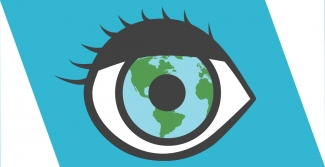The state of the world's eyesight
Vision is one of our most important senses, yet there are over 200 million visually impaired people on earth. We've collated data from independent organisations to create our fascinating infographic on the state of the world’s eyesight.
Facts on the state of the world's eyesight

- There are 7.17 billion people around the world, and 285 million are visually impaired. 80% of cases could be easily avoided.
- 7 million people around the world will go blind this year, mainly because of easily preventable diseases.
- Women and the elderly suffer from eye conditions the most. Over 65% of the visually impaired are 50+, and 2/3 are female.
- Cataracts and uncorrected refractive errors are the two leading causes of visual impairment around the world.
- Over 90% of people suffering from visual impairment live in developing countries. Africa is the most vulnerable continent of all.
- Cataracts are the leading cause of blindness in developing countries. In high-income countries, it is Age-Related Macular Degeneration (AMD).
- In the USA and the UK, only 5% of the visually impaired suffer from cataracts - compared to 65% in Africa.
- Third world countries suffer from visual impairment because of a lack of optical help and the infrastructure to combat treatable diseases.
- Cataract surgery takes around 10 mins and costs just £28, but cataracts still cause 49% of the world’s blindness due to lack of optical aid.
- 18% of the visually impaired suffer from uncorrected refractive errors, which result in blurred vision.
- 18 million people suffer from River Blindness (Onchocerciasis), a disease caused by a parasitic worm that can live up to 14 years in the human body.
- Just a clean bucket of water could help prevent Trachoma, one of the leading causes of blindness in Africa. Tweet this.
- 80 million people suffer from Trachoma, 99% of who live in Sub-Saharan Africa. 180 billion people live in areas where Trachoma is widespread.
- The Human Development Index (HDI) ranks socio-economic development globally. It is based on life expectancy, schooling and gross national income. A high-income country such as the US has an HDI of 0.937, whilst Niger’s is 0.304. Low HDI countries have the highest rates of visual impairment.
- Vision 2020 aims to cure the people currently suffering from avoidable blindness. The estimated cost to achieve this is $23.1 billion. Vision 2020 works to eliminate the causes of blindness and prevent the projected doubling of vision impairment by 2020. Achieving the goals of Vision 2020 means investing in healthcare systems and growing a workforce capable of referring and treating patients.
- Increasing access to primary eye health care is imperative. This means investing in GPs and optometrists who can treat and refer patients.
- The investment in primary eye healthcare needed in high income countries is $251.8 billion, whilst third world countries require $56.6 bn.
- There is a huge shortage of ophthalmologists all over the world. Ethiopia only counts 1 optician for every 1 million people.
- The UK suffers from a shortage of optical professionals. There are just 52 ophthalmologists for every million people.
- Secondary eye health care involves hospital services, including contact with ophthalmologists and treatments such as cataract surgery.
- The additional investment needed in secondary eye care around the world amounts to $106 billion.
- Overall, the amount of money needed to eliminate avoidable blindness and cure those currently suffering from it is $394.2bn.


